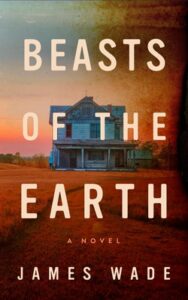I hate conflict of any kind. I go so far as to take the pickles and tomatoes off my burger rather than ask for them to be held, thus ensuring there is no mistake for me to point out later (or more than likely not point out at all). That doesn’t stop conflict from occurring regularly. It has been around every corner since I was a child, always waiting to turn.
Conflict is bad. Violence is worse. And yet it is violence that has historically been the natural progression of conflicts, both major and minor. From wars to riots to domestic disputes, barroom brawls and playground bullies. Violence is inherent. An infant or toddler when faced with something disagreeable will try to slap it away. Peace and compromise must be taught, and even then, children need reminders about sharing, not hitting, and using their words when they’re upset.
Not only is violence an inborn instinct, it’s also a gendered one. A U.S. Department of Justice study showed men commit more violent crimes than women at a nearly 4 to 1 clip, and in countries like the United States, England, and Wales, the number of female victims of violent crime are as high as they’ve been in decades. In the U.S. four women a day are killed by a partner, according to the National Resource Center for Domestic Violence.
Dr. R. Douglas Fields points out in Psychology Today that the leading risk of death throughout the prime of life is not disease. It’s violence.
“If you survive into old age you will most likely die from disease,” Fields writes, “but according to CDC statistics for deaths in the United States for the year 2014, life ends at the hand of another human so frequently, that from early childhood through middle-age, homicide is the third to 5th most common cause of death in all age brackets between 1-44 years.”
In many ways we are safer from violence than at any other time in history, as argued by Steven Pinker in Better Angels of Our Nature: Why violence has declined. But with the advent of 24/7 news and global communication, among other factors, it often feels as if our world is the most volatile it has ever been. Just last week I was made aware of stories involving the abduction and murder of a female jogger and the beheading of a single mother by her ex-partner. Such is the prevalence of violence in our society.
So then, it has been with anecdotal, personal, and statistical experience, that I’ve approached the violence in my novels. Being a rural, southern novelist, I choose often to focus on poorly educated characters who are economically disadvantaged—two more measures which have been argued in several studies to be indicators of an increased probability for violence. Atems and Blankenau show in their study on ‘time-release’ theory, the anti-crime benefits for regions and communities in which educational spending is increased versus those where it is lagging.
Add in the stress and triggering emotions of conflict (as needed for most any novel) and it becomes statistically probable—or, certainly, beyond a statistical anomaly—for characters to use violence to attempt to solve their problems.
But math aside, there is still a strange feeling in the pit of my stomach when I pen a violent a character or describe an act of violence perpetrated against someone. Why add to a cultural zeitgeist already rife with such things? I, like many readers and writers, sometimes wish for the escape of a story with lower stakes than death. And yet, as my existential anxiety reminds me, death is the place where each of our stories end. To ignore that, or to ignore the realism of violence’s long-standing place in humanity, robs us of any attempt to delve into the psyche surrounding our decisions as they relate to it.
In exploring the grey areas of morality, including the situational and societal factors of what leads to our choices and our ability to make them, I want to be as complicit as my characters. I want to try understanding their actions—especially when such actions are far removed from any I would take myself. Literature at its best is a study of human nature using poetry rather than science. But to invoke and involve such nature requires at least some understanding of it. An understanding available to us thanks to science and statistics, as well as experience.
I have said many times that my own past abuse, my personal struggles with purpose and addiction and the reality of non-existence, are all things I attempt to deal with on the page. If I turn my back on the uncomfortable, ignoring the things that ever lurk in the dark, I allow them to move unhindered, to use my ignorance as their strength.
Fields goes on to write, “we cannot hope to control violence if we are bewildered by it.” And while it is my belief that we can never hope to control it at all, I do refuse to be statically bewildered by violence. I will continue trying to work it out on the page— growing as a reader, a writer, and a thinker. And I will continue to help my characters face down their fears and their conflicts, in hopes it will add some understanding to my own.
***


















